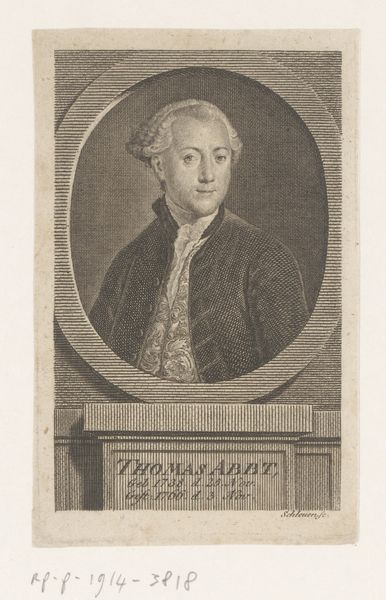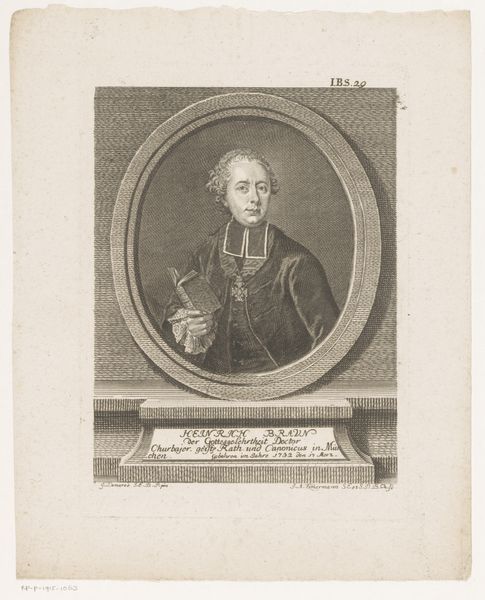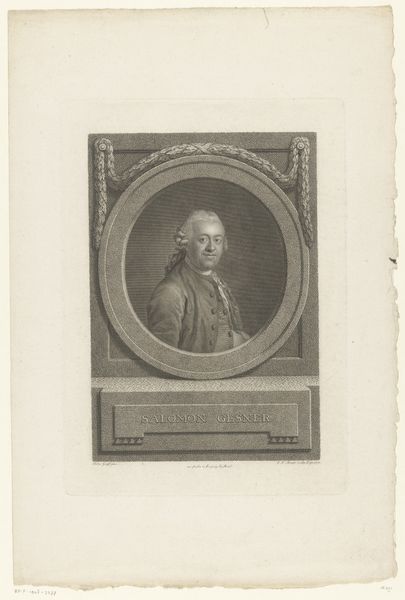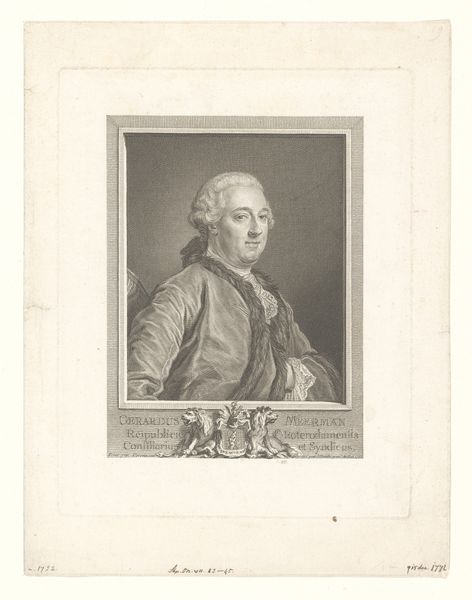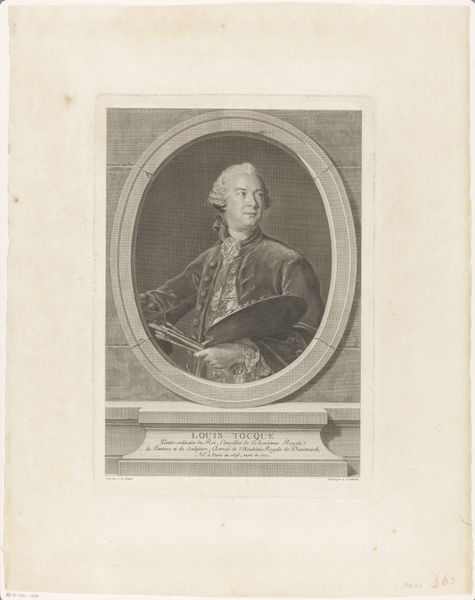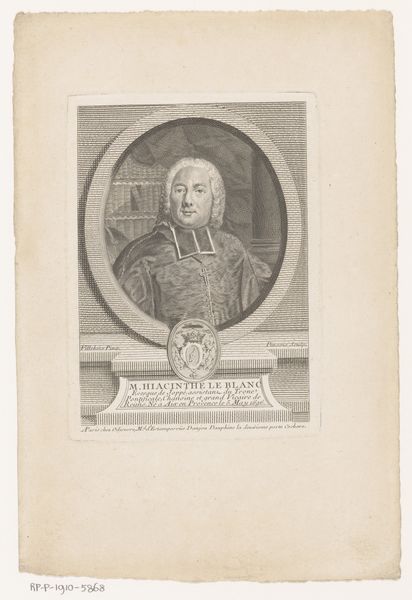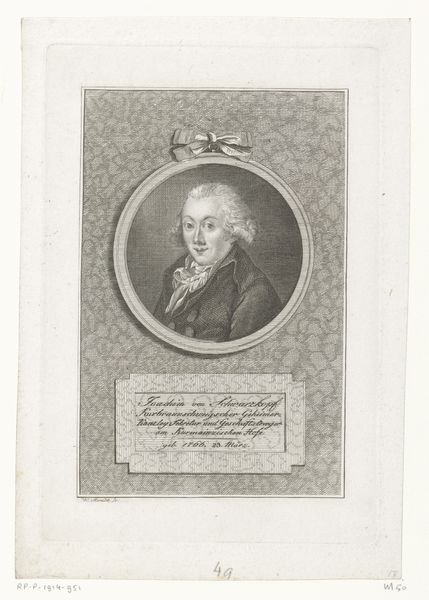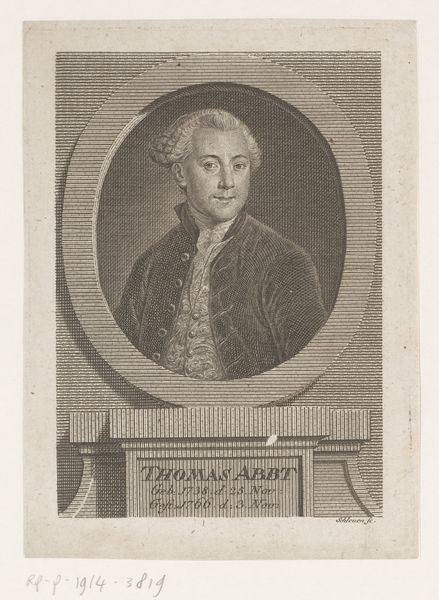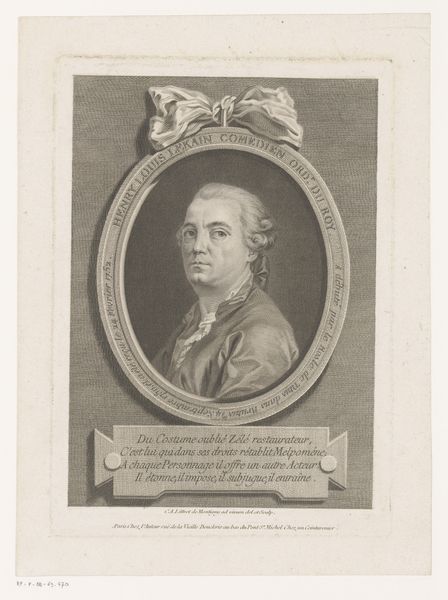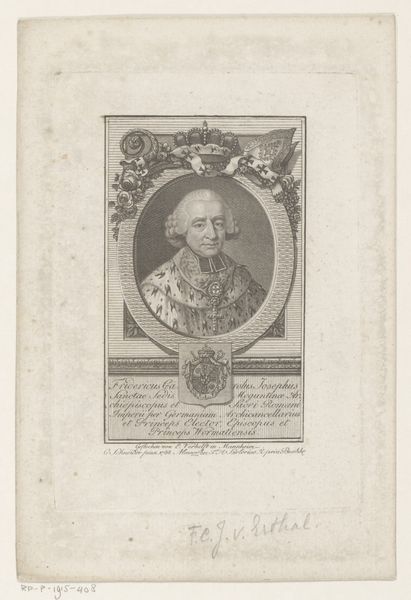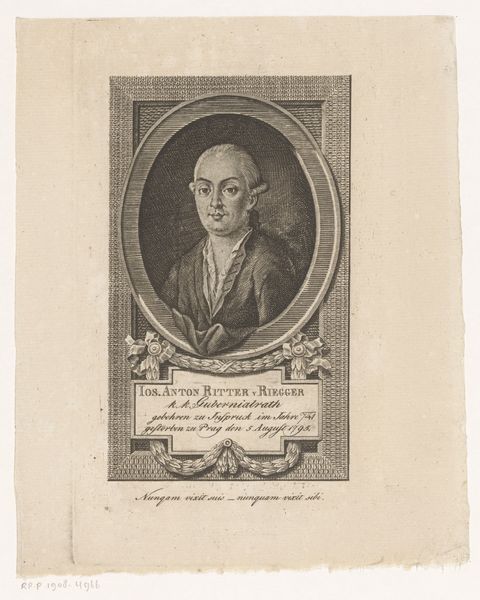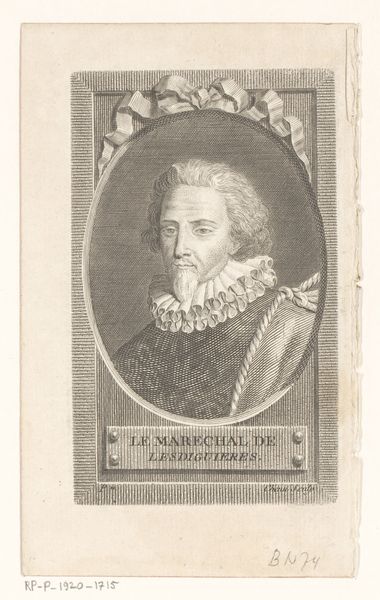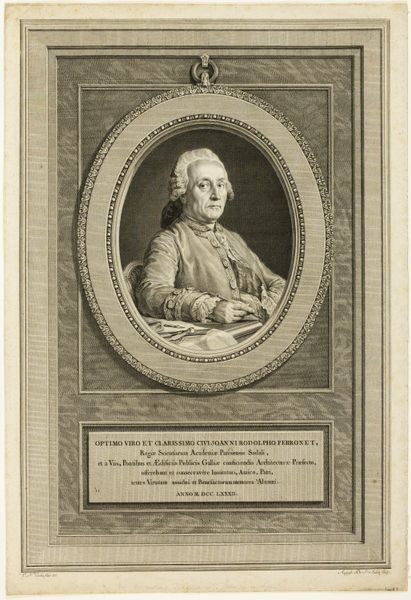
engraving
#
portrait
#
neoclacissism
#
old engraving style
#
archive photography
#
historical photography
#
history-painting
#
engraving
Dimensions: height 226 mm, width 174 mm
Copyright: Rijks Museum: Open Domain
Editor: This is an engraving titled "Samuel Teleki von Szek," dating from 1785 to 1823, and held at the Rijksmuseum. It depicts a stern-looking man in an oval frame with what looks like Latin text. The technique reminds me of old currency. What symbolic weight might this portrait have carried at the time? Curator: Engravings like this served to codify and disseminate status. Consider the visual vocabulary: the oval frame suggests a classical medallion, evoking imperial Roman portraiture, imbuing the sitter with a sense of timeless importance. Notice the text surrounding the portrait – like an inscription on a coin, what message is it intended to convey? Editor: It feels very formal. Like this person was someone very important whose legacy was worth preserving. Is that the goal here? Curator: Precisely. The very act of creating and circulating this image reinforces the sitter's place in the social hierarchy and preserves their memory. But what about the choice of engraving? What does that medium communicate, as opposed to, say, painting? Editor: Maybe because it was more easily reproducible, making it a democratic medium to spread images of powerful figures. I guess that explains why it resembles banknotes and stamps! Curator: Indeed. It served a propagandistic function of sorts, solidifying power and projecting an image of cultivated authority through carefully chosen symbolic cues that still resonate today, though often unconsciously. Now that you see these encoded images everywhere, what has changed and what has remained the same? Editor: This was truly enlightening; I realize that portraits aren't just likenesses; they're also constructed images intended to create and perpetuate cultural narratives. Curator: And understanding the symbols helps us unpack those narratives and critically assess the stories we tell ourselves.
Comments
No comments
Be the first to comment and join the conversation on the ultimate creative platform.
